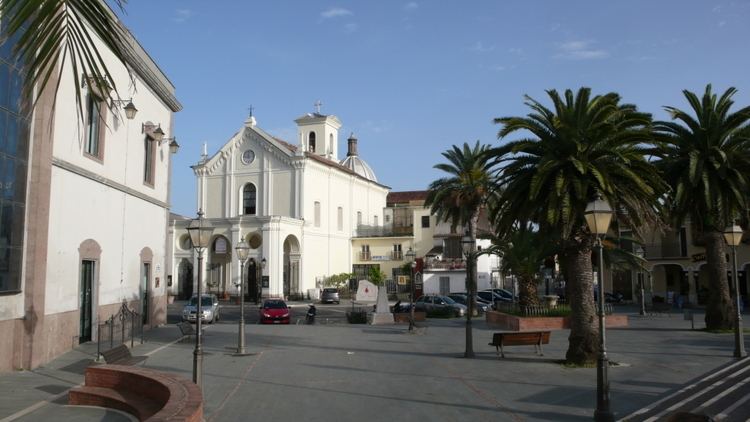Time zone CET (UTC+1) Local time Monday 7:31 AM | Demonym(s) Castellani Area 72.23 km² Population 25,135 (1 Jan 2015) | |
 | ||
Frazioni Bagnara, Baia Verde, Borgo Domizio, Destra Volturno, Ischitella, Scatozza, Seponi, Villaggio Coppola Pinetamare, Villaggio del Sole. Weather 13°C, Wind W at 18 km/h, 76% Humidity | ||
Castel Volturno ([kaˈstɛl volˈturno]) is a comune (municipality) in the Province of Caserta in the Italian region Campania, located about 35 kilometres (22 mi) northwest of Naples and about 35 kilometres (22 mi) west of Caserta on the Volturno river.
Contents
- Map of 81030 Castel Volturno Province of Caserta Italy
- Before the 21st century
- Castel Volturno massacre
- Main sights
- References
Map of 81030 Castel Volturno Province of Caserta, Italy
Before the 21st century
Castel Volturno was a settlement of the Oscans and then of the Etruscans, who called it Volturnum, and was a trade point on the road to Casilinum and Capua. Volturnum became a Roman colony in 194 BC and, in 95 AD, it was reached by the Via Domitiana, and received a large bridge connecting the two shores of the river with the same name.
The town decayed after the fall of the Western Roman Empire, and, in 806, Duke Grimoald I of Benevento gave its port to the abbots of Montecassino. In 841 it was ravaged by Saracens. After 856, the Lombard bishop Radipert had a castle built on what remained of the bridge. After a period under local counts, in 1062 it was again given to Montecassino while in 1206, Frederick II donated it to the archbishops of Capua.
Alfonso V of Naples gave it to his daughter, but, when her husband, Duke Marino of Sessa, rebelled, besieged it and destroyed part of the walls (1460). The following year the king sold it to the city of Capua, which held it until the abolition of feudalism in the Kingdom of the Two Sicilies in 1810. In 1812 it became an autonomous commune. In 1860 it was annexed to the newly unified Kingdom of Italy.
Castel Volturno received a boost in its agricultural activities after the nearby lands were dried during the Fascist government, and after the new Domiziana Road and a new bridge were built (1954).
Castel Volturno massacre
The Castel Volturno massacre was a massacre perpetrated by the Casalesi clan that led to the deaths of seven people on September 18, 2008. The massacre outside the Ob Ob Exotic Fashion tailor shop on the Via Domitiana was widely characterized as part of a growing conflict between the native Camorra and the immigrant African drug gangs. Murdered were Antonio Celiento, the owner of an arcade next to Baia Verde, and six African immigrants: Samuel Kwaku, 26 (Togo); Alaj Ababa (Togo); Francis Antwi, 31 (Ghana); Eric Affum Yeboah, 25 (Ghana); Alex Geemes, 28 (Liberia) and Cristopher Adams, 28 (Liberia). Joseph Ayimbora (Ghana), 34, survived by feigning death; he later helped identify the killers.
The murders sparked violent protests from Castel Volturno's immigrant community the following day, which culminated in the signing of measures launched by the Ministry of Interior and the Ministry of Defense on combating organized crime and illegal immigration to Caserta.
